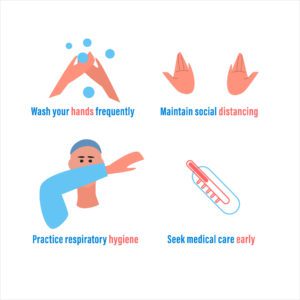Here is an article about a popular cosmetic product claim. This article explains that there are currently a variety of testing procedure for supporting ‘dermatologically tested’ claims and takes into account some dermatological, scientific and ethical issues that may assist cosmetic companies to understand the implications of such type of testing.
It is a popular claim, appearing on cosmetic, personal care products and even household products to name a few.
What does ‘dermatologically tested’ mean?
It is generally accepted that the definition of ‘dermatologically tested’ relates to the fact that the finished product has been tested on human skin; that the formula is mostly safe to be applied on the skin; that the finished product is well tolerated and in most cases will not cause a skin reaction.
It is important to note that such a claim has not currently been regulated in terms of its exact meaning, nor are there uniform standards across the industry on what test procedure is to be followed to substantiate such a claim. Although there are a number of recommendations and guidelines issued over the years by different regulatory authorities, and various types of published methods, testing facilities around the globe offer different solutions for human safety testing in vivo.
One of the most popular tests to substantiate ‘dermatologically tested’ claim is the Human Repeated Insult Patch test (HRIPT), which involves repeated application of the test product followed by a rest period and then a challenge phase with a new application of the product, after which a final skin evaluation is conducted. This test aims to detect the product’s potential to cause irritation and sensitisation.
Demand and supply
Since the product marketers are ultimately responsible for ensuring substantiation of their product safety, most distributers of cosmetic and personal care products have a full understanding of the scientific procedure involved for testing the safety of their products. Their technical or R&D department is often involved in the decision regarding the type of testing and the number of subjects required to substantiate their products’ safety claims.
On the other hand it happens that a number of cosmetic companies are not well informed about the process involved in in vivo safety testing and are allured by testing service providers that offer safety testing at exceptionally low cost. In a competitive global market, it is not surprising that services can be offered at a much cheaper price in some developing countries – with their pros and cons. It is somewhat surprising though, that service providers in some of the world’s major economies can offer services 10 or 20 times cheaper than other providers in the same country or other developed countries. The scrupulous scientist would be prompted to ask: how?
1) Testing conducted on a great number of products at once on the same person (some will test up to 50!)
Dermatological considerations: the HRIPT aims at detecting the potential of the product to cause irritation and sensitisation. The more products you test simultaneously on one subject, the more difficult it is to attribute a certain result to one product. With more products there are likely to be more unknown variables associated with potential interactions between multiple products.
Ethical considerations: Sensitization is the process by which humans can develop over time increased allergic responses to a substance through repeated exposure to that substance. It is different from irritation because it involves the immune response. Due to immune response, the reaction becomes worse with repeated exposure. The HRIPT has therefore the potential to cause an immune response. It does not seem justified to expose a human to such risk multiplied by 50 times.
2) Testing products from different clients on the same person
More ethical considerations: it has been referred as “shared backs” the practice of patch testing products belonging to a number of different cosmetic companies on the same person’s back. The problem that arises from such practice is related to the safety of the human volunteers. Who is responsible for any damage to the subject that is caused by the test product(s) when multiple companies have been testing their products on the same subject? Although the event of severe reactions could be rare, it is certainly a possibility.
3) Testing procedures that allow a high margin of error
Scientific considerations: a scientific test involves well-controlled testing methods based upon standardized operating procedures. To ensure consistency in times of exposure to the product, all applications of product, removal of patches, and evaluations of skin condition should be performed by trained professionals at the test facility. If there are a large number of products being tested at once, there is a higher chance that an error can occur at any point in time that will affect the results of the test. Cosmetic and personal care companies that are serious about making safety claims about their products and serious about the safety of their consumers, should question testing facilities with regards to their testing procedures.
General considerations
Although cosmetic ingredients being used in the test products could be deemed to be safe and the risk for the test subjects is generally low, some of the products being tested are new formulations that have not been on the market before. As such, the testing companies are conducting an experiment, and it cannot be assumed that the products being tested are safe and will not cause a reaction. It is, therefore, essential to minimize the potential risk to the test subject by testing a small number of products at once from the same company, or even one product at a time, if required.
At a time when the recent European ban to animal testing for cosmetic products – which has been also proposed in other countries including Australia – emphasises the life of animals against cosmetic research, we are asked to consider practices involving human beings. In vivo dermatological testing needs to be based on a rigorous ethical conduct which emphasises the safety of volunteers and achieving the best outcome for the clients.




